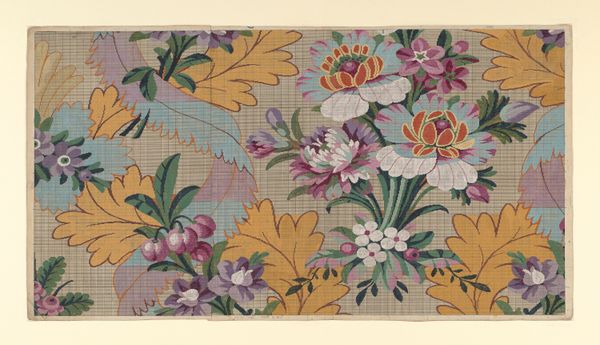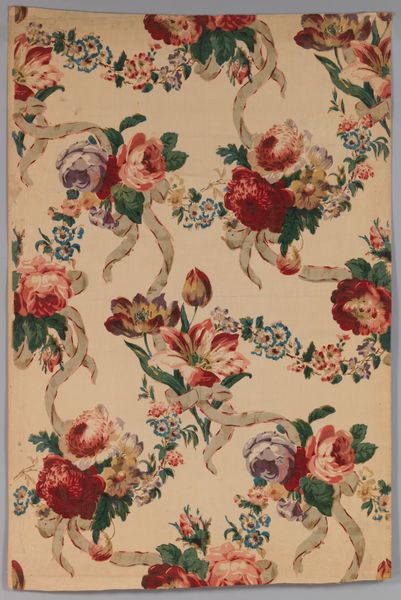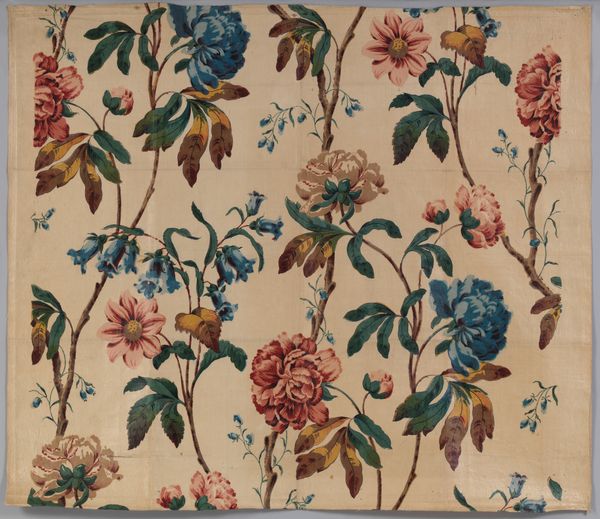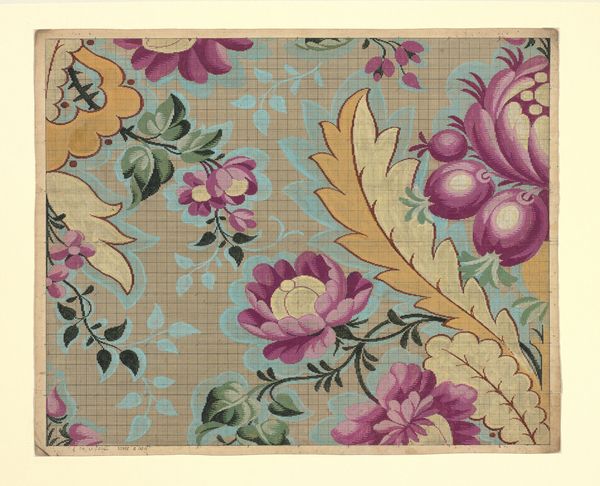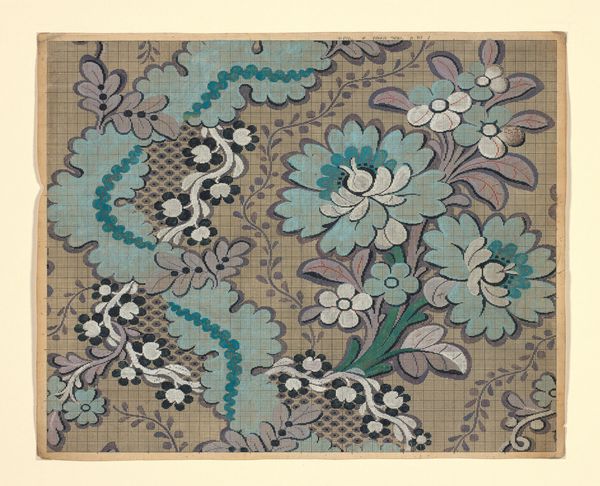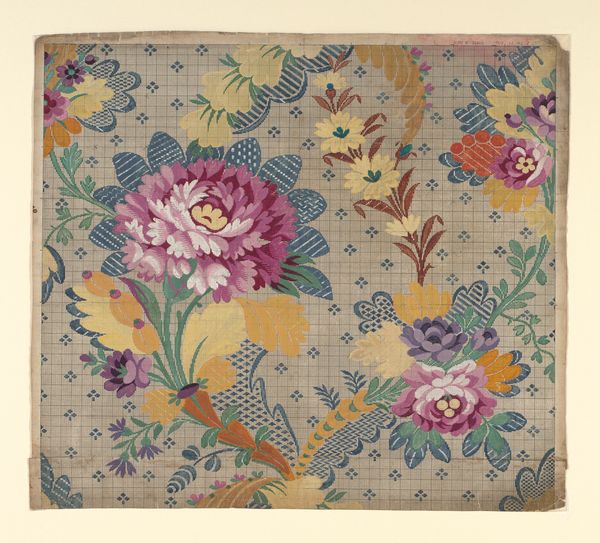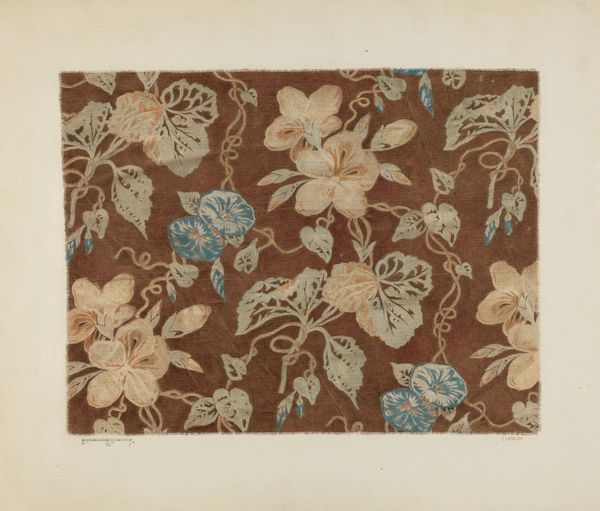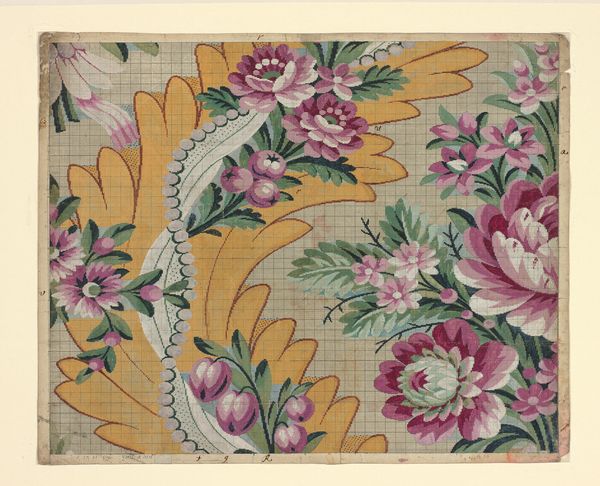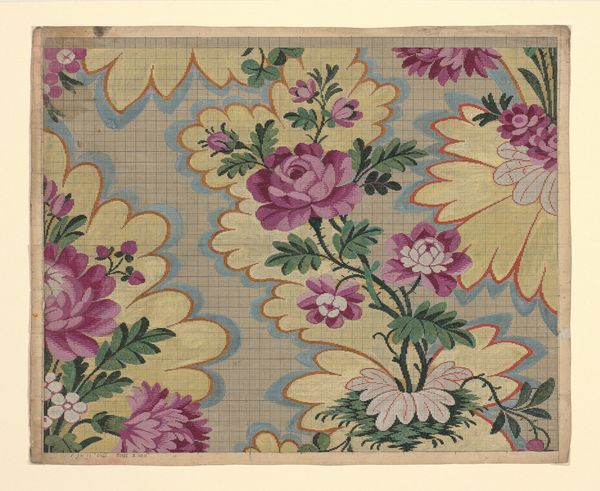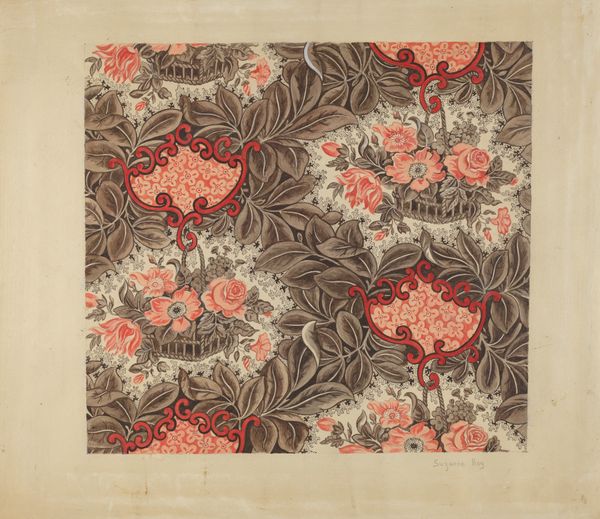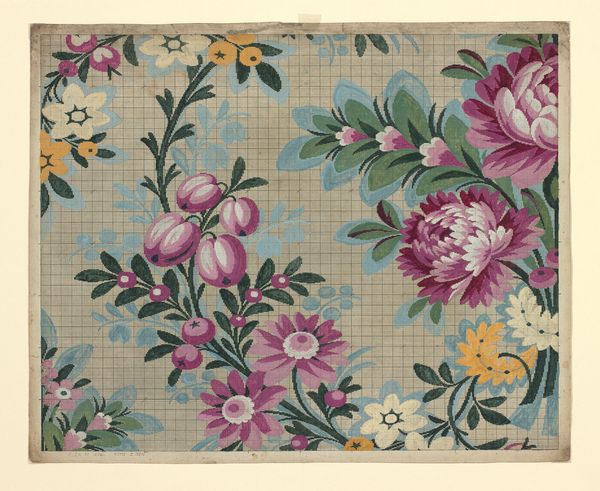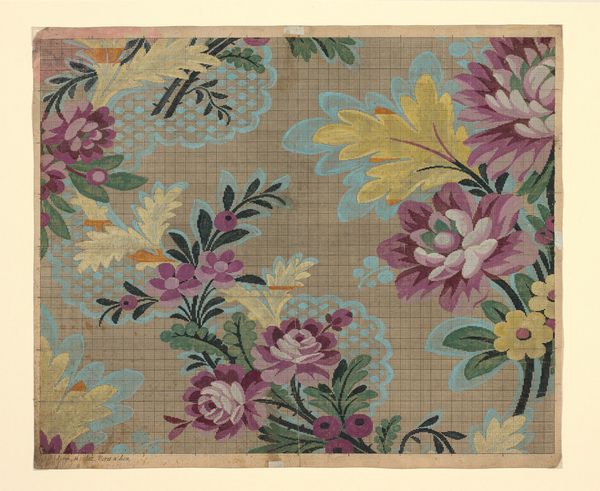
drawing, painting, watercolor
#
drawing
#
painting
#
landscape
#
fantasy-art
#
figuration
#
watercolor
#
watercolor
Dimensions: overall: 38.4 x 48.4 cm (15 1/8 x 19 1/16 in.) Original IAD Object: length of fragment: 16", width 12"
Copyright: National Gallery of Art: CC0 1.0
Curator: Looking at "Bandbox," painted circa 1939, I'm immediately drawn to its whimsicality, the pastel hues creating a sort of dreamy landscape. What strikes you most about this work? Editor: I am interested in the work's materials and craft. It appears to be watercolor and some kind of drawing, perhaps colored pencil? The image is of someone, maybe a jester or an actress in costume, swinging amongst big, pastel roses. There's a definite textile feel, suggesting a connection to labor and material production that speaks to both its design and potential use. Curator: I appreciate that observation about textiles; it provides insight. The figure strikes me as intentionally ambiguous—gender, class, origin, all remain delightfully undefined, allowing us to see it through the lens of performance and perhaps even transgression during a turbulent pre-war period. How might it challenge notions of societal constraints and identities? Editor: Perhaps by embracing fantasy as a way to reimagine those societal constraints, the artist highlights labor and challenges a class-based view of artistic making. Does the medium reflect an intention of creating an accessible form, not meant for an elitist gallery, perhaps hinting at the artist's views on artistic expression for the masses? Curator: I find myself considering that within the context of art production and distribution, "accessibility" has different implications. It perhaps reflects an intimacy, a desire for shared expression across social barriers, though those barriers persisted regardless. I feel that it might also be interpreted as a subversion of established gender roles or power dynamics in art history. Editor: In this sense, isn't the swing also revealing something? Material is always used; a maker constructs it for someone else. Are we perhaps seeing an opportunity to reevaluate these production methods as creative processes? It challenges the divide of artist as creator, and artwork as object to be possessed by the privileged, placing the emphasis back onto labor and materiality itself. Curator: Absolutely, in that regard "Bandbox" becomes a critical interrogation, encouraging the observer to ask pertinent questions about identity, making and how we negotiate them, and that’s incredibly relevant. Editor: Indeed, by foregrounding these relationships and inviting dialogue between material, labor, and our contemporary lens, “Bandbox” provides an intriguing point of reflection.
Comments
No comments
Be the first to comment and join the conversation on the ultimate creative platform.
